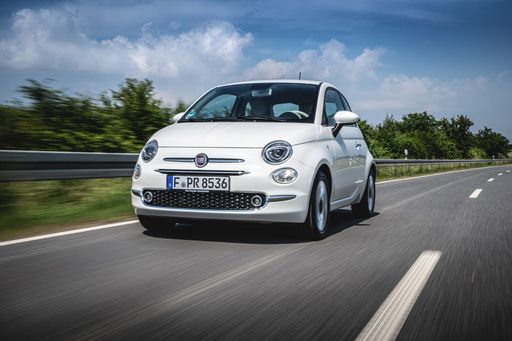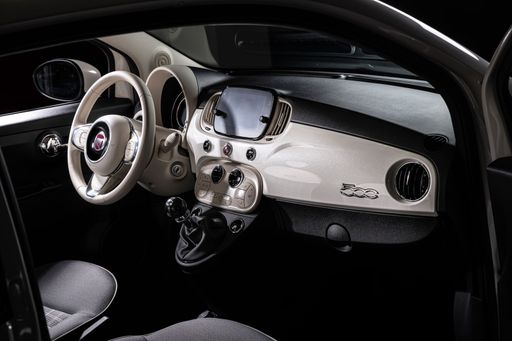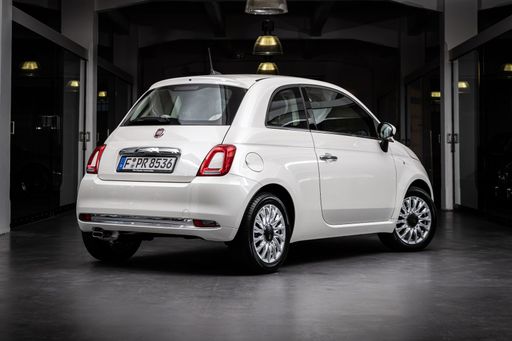Alfa Romeo Junior vs Fiat 500 – Which model is better for everyday use?
Two cars, one duel: Alfa Romeo Junior meets Fiat 500.
Which one wins in performance, efficiency and value for money? Find out now!
Costs and Efficiency:
When it comes to price and running costs, the biggest differences usually appear. This is often where you see which car fits your budget better in the long run.
Fiat 500 has a to a small extent advantage in terms of price – it starts at 21400 £, while the Alfa Romeo Junior costs 25700 £. That’s a price difference of around 4251 £.
In terms of energy consumption, the advantage goes to the Fiat 500: with 13 kWh per 100 km, it’s to a small extent more efficient than the Alfa Romeo Junior with 15.10 kWh. That’s a difference of about 2.10 kWh.
As for range, the Alfa Romeo Junior performs slightly better – achieving up to 410 km, about 79 km more than the Fiat 500.
Engine and Performance:
Under the bonnet, it becomes clear which model is tuned for sportiness and which one takes the lead when you hit the accelerator.
When it comes to engine power, the Alfa Romeo Junior has a convincingly edge – offering 280 HP compared to 118 HP. That’s roughly 162 HP more horsepower.
In acceleration from 0 to 100 km/h, the Alfa Romeo Junior is convincingly quicker – completing the sprint in 5.90 s, while the Fiat 500 takes 9 s. That’s about 3.10 s faster.
In terms of top speed, the Alfa Romeo Junior performs noticeable better – reaching 206 km/h, while the Fiat 500 tops out at 150 km/h. The difference is around 56 km/h.
There’s also a difference in torque: Alfa Romeo Junior pulls noticeable stronger with 345 Nm compared to 220 Nm. That’s about 125 Nm difference.
Space and Everyday Use:
Whether family car or daily driver – which one offers more room, flexibility and comfort?
Seats: Alfa Romeo Junior offers a bit more seating capacity – 5 vs 4.
In curb weight, Fiat 500 is slight lighter – 1330 kg compared to 1380 kg. The difference is around 50 kg.
In terms of boot space, the Alfa Romeo Junior offers clearly more room – 415 L compared to 185 L. That’s a difference of about 230 L.
In maximum load capacity, the Alfa Romeo Junior performs decisively better – up to 1280 L, which is about 730 L more than the Fiat 500.
When it comes to payload, Alfa Romeo Junior clearly perceptible takes the win – 420 kg compared to 305 kg. That’s a difference of about 115 kg.
Who wins the race?
The Alfa Romeo Junior proves to be dominates this comparison and therefore becomes our DriveDuel Champion!
Alfa Romeo Junior is the better all-rounder in this comparison.
 @ Alfa Romeo / Stellantis Media
@ Alfa Romeo / Stellantis Media
Alfa Romeo Junior
Alfa Romeo Junior
The Alfa Romeo Junior captures the essence of Italian design with its sleek lines and compact dimensions, making it an icon of elegance and performance. With a spirited driving experience and a charming retro aesthetic, it appeals to enthusiasts and casual drivers alike. This delightful car embodies the brand's rich heritage while remaining a fun and engaging option for those seeking a unique automotive experience.
details @ Alfa Romeo / Stellantis Media
@ Alfa Romeo / Stellantis Media
 @ Alfa Romeo / Stellantis Media
@ Alfa Romeo / Stellantis Media
 @ Alfa Romeo / Stellantis Media
@ Alfa Romeo / Stellantis Media
Fiat 500
The Fiat 500 is a compact and stylish city car that has captured the hearts of urban drivers with its charming retro design. Its nimble handling and efficient engine make navigating tight city streets a breeze, while its cosy interior offers a surprising amount of comfort and modern technology. The car's iconic silhouette and vibrant colour options ensure it stands out, offering a unique blend of timeless appeal and contemporary flair.
details @ Fiat / Stellantis Media
@ Fiat / Stellantis Media
 @ Fiat / Stellantis Media
@ Fiat / Stellantis Media
 @ Fiat / Stellantis Media
@ Fiat / Stellantis Media
 @ Alfa Romeo / Stellantis Media
@ Alfa Romeo / Stellantis Media
|
 @ Fiat / Stellantis Media
@ Fiat / Stellantis Media
|
|
|
|
Costs and Consumption |
|
|---|---|
|
Price
25700 - 41600 £
|
Price
21400 - 30800 £
|
|
Consumption L/100km
4.8 - 5.4 L
|
Consumption L/100km
-
|
|
Consumption kWh/100km
15.1 - 17.5 kWh
|
Consumption kWh/100km
13 - 14.7 kWh
|
|
Electric Range
344 - 410 km
|
Electric Range
190 - 331 km
|
|
Battery Capacity
0.4 - 51 kWh
|
Battery Capacity
21.3 - 37.3 kWh
|
|
co2
0 - 119 g/km
|
co2
0 g/km
|
|
Fuel tank capacity
44 - 45 L
|
Fuel tank capacity
-
|
Dimensions and Body |
|
|---|---|
|
Body Type
SUV
|
Body Type
Hatchback
|
|
Seats
5
|
Seats
4
|
|
Doors
5
|
Doors
3 - 4
|
|
Curb weight
1380 - 1689 kg
|
Curb weight
1330 - 1475 kg
|
|
Trunk capacity
340 - 415 L
|
Trunk capacity
185 L
|
|
Length
4173 mm
|
Length
3632 mm
|
|
Width
1781 mm
|
Width
1683 mm
|
|
Height
1505 - 1538 mm
|
Height
1527 mm
|
|
Max trunk capacity
1205 - 1280 L
|
Max trunk capacity
550 L
|
|
Payload
390 - 420 kg
|
Payload
250 - 305 kg
|
Engine and Performance |
|
|---|---|
|
Engine Type
Electric, Petrol MHEV
|
Engine Type
Electric
|
|
Transmission
Automatic
|
Transmission
Automatic
|
|
Transmission Detail
Dual-Clutch Automatic, Reduction Gearbox
|
Transmission Detail
Reduction Gearbox
|
|
Drive Type
Front-Wheel Drive, All-Wheel Drive
|
Drive Type
Front-Wheel Drive
|
|
Power HP
136 - 280 HP
|
Power HP
95 - 118 HP
|
|
Acceleration 0-100km/h
5.9 - 9.1 s
|
Acceleration 0-100km/h
9 - 9.5 s
|
|
Max Speed
150 - 206 km/h
|
Max Speed
135 - 150 km/h
|
|
Torque
230 - 345 Nm
|
Torque
220 Nm
|
|
Number of Cylinders
3
|
Number of Cylinders
-
|
|
Power kW
100 - 207 kW
|
Power kW
70 - 87 kW
|
|
Engine capacity
1199 cm3
|
Engine capacity
-
|
General |
|
|---|---|
|
Model Year
2024 - 2025
|
Model Year
2023 - 2025
|
|
CO2 Efficiency Class
A, C, D
|
CO2 Efficiency Class
A
|
|
Brand
Alfa Romeo
|
Brand
Fiat
|
What drive types are available for the Alfa Romeo Junior?
Available configurations include Front-Wheel Drive or All-Wheel Drive.
The prices and data displayed are estimates based on German list prices and may vary by country. This information is not legally binding.
